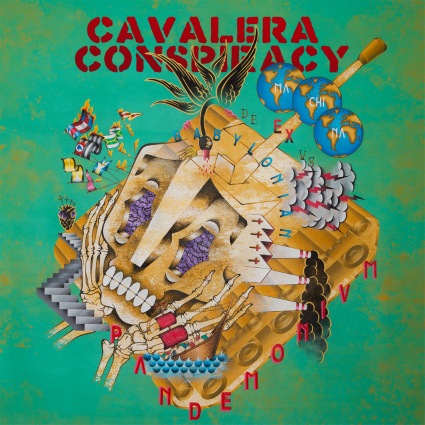Napalm Records
All Access Rating: A-
 |
| Cavalera Conspiracy - Pandemonium 2014 |
Abandoning melody just as the disillusioned and hopeless might turn away from God, Cavalera Conspiracy delivers their most visceral record to date, combining the heavy brutality of Brazilian death/thrash metal kingpins Sepultura – founded in part by Max and Igor – with the hammering industrial violence of latter-day Ministry.
Every track is a delirious aural madhouse, beginning with the bludgeoning, buzzing hive of activity "Babylonian Pandemonium" and rushing headlong into the pounding "I, Barbarian," with its odd, fun-house guitar effects. Air raid sirens, barking dogs and snippets of speeches contribute to the disorienting sonic melee, flooded with Max's gutteral bellow and blunt lyrical imagery, drums relentlessly pummeling away, down-tuned breakdowns and searing, psycho guitars going off in unusual directions, as if following some insane muse.
Any red meat tossed in the vicinity of the ravenous "Bonzai Kamikazee" would immediately be devoured whole, its pawing, clawed riffs lunging at enemies real or imagined. Charging just as hard, the thundering "Cramunhao" simply overwhelms the senses, growing increasingly powerful and dense. And even when Cavalera Conspiracy is in danger of going completely off the rails – the unhinged insanity of "Scum" and "Apex Predator" being two instances – they are forever grounded in mauling, disciplined grooves that leave discernible trails so nobody gets lost, although it is next to impossible to keep up with the runaway speed of "Insurrection" and the swift, strong currents of energy that carry "Not Losing The Edge." Not to mention the fact that they stuff the record with a bevy of interesting auditory elements, rewarding repeated listens with new textures and discoveries.
One of the most intense and ferocious records to date from the Cavalera brothers, Pandemonium makes Soulfly seem an unnecessary distraction for Max. This is one Conspiracy theory that demands more investigation.
– Peter Lindblad


